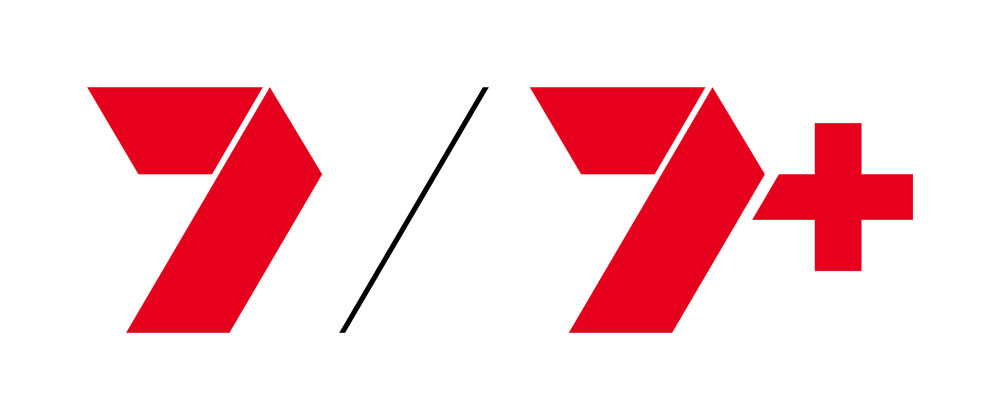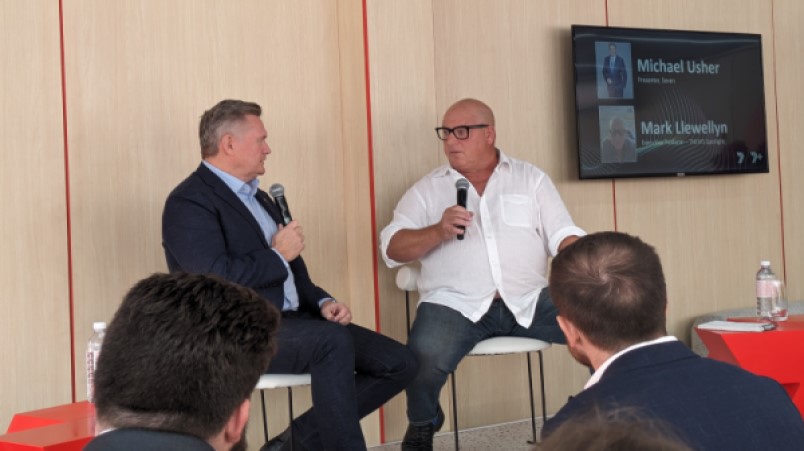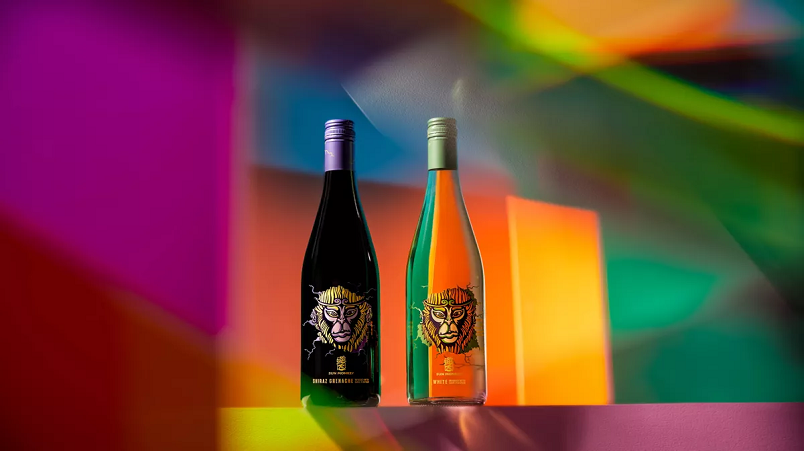SxSW Daily Wrap - Wednesday: Seven's Mark Llewelyn on the power of long form; Virgin marketer's faux pas about Nine at Seven; rebranding cellar doors and Sake-infused wine; QSR sees self-selection lead to bigger order sizes
An Mi3 editorial series brought to you by
7 / 7plus


An Mi3 editorial series brought to you by
7 / 7plus

Can't make every session at SxSW Sydney? Fear not. The Mi3 team is on the ground with this daily wrap of bits, bytes and banter from SxSW sessions, speakers and conversations each day. Here's the latest of Mi3 dispatches from Wednesday 18 October.
What’s old is new: The popularity of long form storytelling proves attention is not dead – and marketers got it wrong – Seven's Mark Llewelyn
Seven Spotlight program executive producer, Mark Llewelyn was delighted to tell marketers the resurgence of long form storytelling, pumping podcasts and the power of the interview is making "knobs" of those who proclaimed short form content the only way to grab attention. Wonder who he could have meant.
The veteran reporter, director and producer opened up on the most controversial, life-threatening and fun stories he’s reported on, the criticality of truth in storytelling and the modern journalist’s role. But his insights into creating compelling narratives perhaps provide the most salutary lessons for the marketing and media industry. Llewelyn was joined by Seven presenter and journalist, Michael Usher, on stage at Seven House.
They recalled a marketing session in the not too distant past where they were informed that the best way to capture shortening attention spans and counter social media’s land grab was to tell stories in short form.
“We were told the average attention span has just died. In this marketing session, they told us we should therefore cut to 1 minute 30 second stories and grabs of no longer than 15 seconds, throw in music and move on. It was anathema to me,” Llewelyn said. “They were knobs - they had no idea."
Having longer than a 15 second grab and no music to jar the concentration, he warmed to the subject.
“Just think about it: A few years ago, podcasts were not a thing. Now, the best podcasts are massive. Why? Because by and large, the stories unfold. They may be raw in telling and not as professional as our documentaries, but the stories unfold. It shows people are willing to listen to those stories. You have multiple episodes and interviews that go for an hour. Questions go back and forth and the narrative evolves."
Mi3's occasional mammoth podcasts, often raw but always healthy, underline that truth.
“It demonstrates people are prepared – if subject is of interest, the person talking is interesting and it’s relevant to their lives – that they’re prepared to sit down and listen.”
The old-fashioned, analogue way of telling stories is now apparently the new way, Llewelyn said. “Our challenge is to try and hold the line, say we can do this and people will come,” he said.
He said those hawking the emperor's new clothes eventually realised they were suffering a strategic wardrobe malfunction.
“A few years later, the marketers did come back and say we got that wrong. There’s too much white noise in social media. People wanted context and longer conversations. Because what people are looking for in a very crowded, white-noise world, is authenticity.”
The pair nevertheless admitted plenty of journalism has betrayed consumer trust in the world of digital, fast-paced, increasingly biased content delivery.
“We need to be in position where not only are our stories representative of people we are talking to, but we’re authentic in the way we tell them and in the way stories are being presented,” Llewelyn added.

Virgin’s Happiness Island leads to friendly fire with Seven CMO on choice of broadcast partners
Attendees at SxSW Sydney were unexpected eavesdroppers on a jovial exchange between Virgin senior marketing manager, Patrick Millington Buck, and Seven Network’s chief marketing and audience officer, Mel Hopkins, about the airline’s choice of broadcaster to PR its Happiness Island campaign.
During a discussion of Virgin’s longstanding partnership with the Starlight Foundation, Millington Buck detailed the recent Happiness Island campaign and activation, which ran on Hamilton Island in July. The campaign, in partnership with Hamilton Island Tourism Board, saw the destination renamed Happiness Island for a weekend as part of efforts to bring happiness to 10 sick kids fulfilling their Starlight wishes. The activity was timed to celebrate Starlight delivering its 13,000th wish.
Virgin created a series of ‘happy’ experiences – from captains in fancy dress to trivia and games on the plane ride in, through to local island activities including a welcome dinner with Matty J, a surprise intimate performance from Kita Alexander and a fireworks display.
The work became a significant brand equity, not to mention PR win, for Virgin, Millington Buck said. In the midst of describing its impact at Seven House, he made the faux pas of mentioning broadcast partner, Channel Nine, as its partner for the PR activity.
The comment earned a quick retort from Hopkins asking why Virgin hadn’t pitched the idea to Channel Seven.
“I think we did actually,” Millington Buck responded. To which, to her credit, Hopkins laughed. It was probably before her time.
The banter continued several minutes later, when Millington Buck detailed the commercial partnership work he’s been spearheading between Virgin Airlines and the AFL. As well as being worth millions in flights, the integrated partnership includes working together on campaigns, content and programs that provide a “win-win-win” for the brand, the AFL and the fans themselves, he said.
“The AFL is on Channel Seven,” Hopkins reminded attendees. Millington Buck attempted to redeem himself: “We work with a number of different networks and we have done activity with Seven as well”
Another round of laughs all round. Check out our full story on Virgin's partnership strategy here.
Domino’s, Subway: Consumers buy more eats when they self-select in aggregator platforms
Not only are third-party delivery platforms, affectionately called 3PDs by QSR, delivering incremental customers, they’re serving up higher average customer order sizes too. Which presents potential for affiliate gym memberships.
Speaking on a panel hosted by Uber Advertising at SxSW Sydney on Wednesday, Subway director of marketing A/NZ, Rodica Titeica, and Domino’s group head of aggregators and partnerships, Dale Oven-Brown, revealed they’re seeing bigger customer order sizes through the likes of Uber Eats than they’ve seen in IRL.
Titeica surmised one reason is Subway’s highly guided in-store experience presents so many choices to the consumer, staff and customers are reluctant to ask or are too fatigued to be responding to additional questions on add-ons.
“But what we noticed through our owned app and 3PD channels is we’re selling more when the sandwich artist is not involved,” she said. “Customers actually self-select to buy more items and spend more money in digital channels with us. Typically, in a restaurant we’ll see a unit – a wrap or sub for example – but have a hard time selling drinks, add-ons like cookies, or making it a meal. In 3PD or an app, it’s different.
“We’re well behind in terms of digital innovation in our business… the fact the guest is leading our actions in this space and leads by telling us what they want, means we have to level up to meet that. It is a challenge. The resistance from the business comes back as the guest doesn’t want a drink or a side for whatever reason. But we can see when they’re making the choice through the online journey themselves, they’re spending a lot more and buying a lot more items.
“This is driving change in our business processes – it’s something we are taking from the online environment and bringing to offline.”
Oven-Brown agreed when customers are offered a drink or a side in direct, analogue channels like pick-up or phone, they’re usually resistant to buy more. But Domino’s also experiences significantly higher average sales online through self-service.
“That pressure of an in-person upsell versus digital presentation of an option, the customer is more willing to say I’d like that,” he said. “It’s opposed to that sometimes innate human reaction to say no thanks, I don’t need something else.”
Which just makes you wonder: Are we all so worried about what the human server thinks about our consumption of food, we’re too afraid to get that extra cookie?
Perhaps, says Titeica, but it’s also proof brands need to “get out of our own way and provide consumers with all the range of options to make their choice of how they want to show up”.
“Let’s just give them the options,” she said. “Different consumers take different journeys, and we want to provide that opportunity for them to shop when, where and how they want.”
Both executives also agreed they’re generating “vastly” incremental customer wins on third-party delivery platforms. Titeica warned other QSRs they’re limiting their pool of customers by not actively educating franchise owners and stores to embrace the 3PD trend. Domino’s, which Oven-Brown said had only really embraced aggregator platforms over the last 12 months given the importance of its own owned delivery channels, has positioned third-party platforms to franchisees as “digital food courts”.
“You’re in a Westfield and go to the food court. If Domino’s isn’t there, they’re going to order something else – they have to eat something," said Oven-Brown. "We not only need to be present, but dominant in this space.”

Why Penfold’s CMO is renaming the cellar door and created a Sake-infused wine
Driving new experiences, rethinking brand platforms and creating new products to attract new, less wine-savvy drinkers are all part of Penfold’s plans to curb the decline in overall wine consumption globally.
During SxSW, a trio of executives talked through an array of brand activations, new brand narratives and curated experiential activities designed to tackle this challenge. A good example is transforming the traditional masterclass wine tasting experience, usually reserved for the trade, into an immersive consumer experience powered by in-person sensory flavours, smells and activities and complemented by digital education and connection. There's also a significant shift in product under the brand portfolio to 'unwine' perceptions of the wine category. Just take the launch of Sun Monkey, the first Sake-infused wine (pictured below).
The brand evolution arguably to most tickle this journalist’s fancy, however, was global CMO, Kristy Keyte’s decision to rename the traditional on-premise and owned staple of wine tasting, the cellar door, to “brand homes”.
“The brand home takes you away from just being at the physical home of the winery and into urban flagship stores around the world,” Keyte told attendees. “You may be thinking, ooh, a pop-up in shopping centre. Maybe I’m showing up in Shanghai. This is something other categories, like spirits does very well. This is the dynamic that’s changing. It’s a curated experience you can bring to life in a completely different way. You can do something completely different in an urban/Shanghai location than you would in the Penfold’s estate on the winery.
“There’s lots of fun to be had. That’s the way we’re thinking about that would transform things for us.”
We might just drink to that brand effort.

